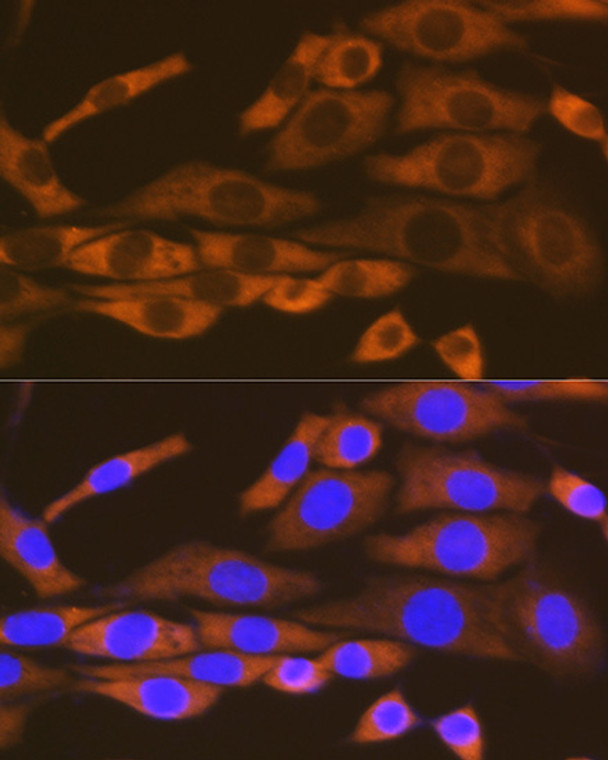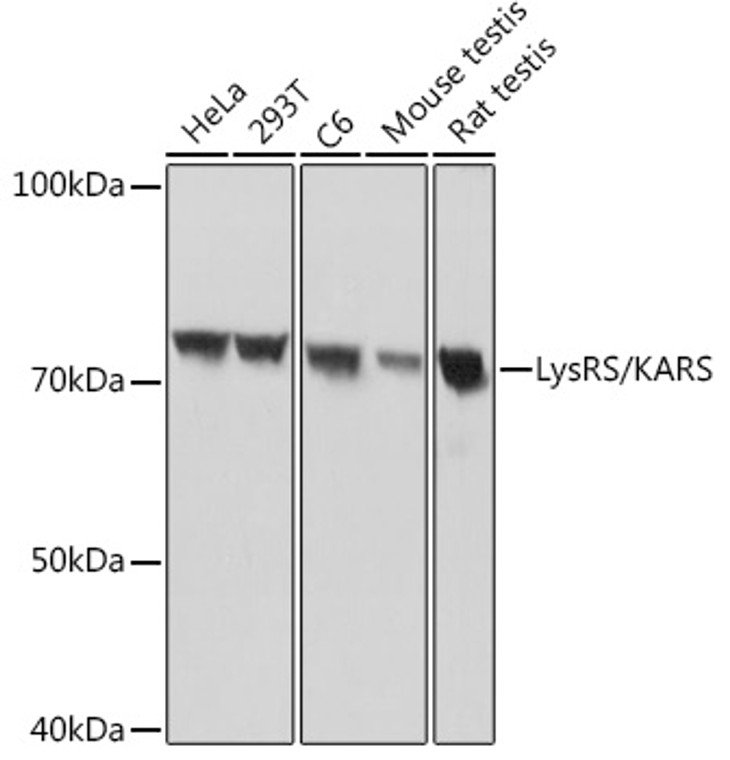| Host: |
Rabbit |
| Applications: |
WB/IHC/IF |
| Reactivity: |
Human/Mouse/Rat |
| Note: |
STRICTLY FOR FURTHER SCIENTIFIC RESEARCH USE ONLY (RUO). MUST NOT TO BE USED IN DIAGNOSTIC OR THERAPEUTIC APPLICATIONS. |
| Short Description: |
Rabbit monoclonal antibody anti-LysRS (500-597) is suitable for use in Western Blot, Immunohistochemistry and Immunofluorescence research applications. |
| Clonality: |
Monoclonal |
| Clone ID: |
S4MR |
| Conjugation: |
Unconjugated |
| Isotype: |
IgG |
| Formulation: |
PBS with 0.02% Sodium Azide, 0.05% BSA, 50% Glycerol, pH7.3. |
| Purification: |
Affinity purification |
| Dilution Range: |
WB 1:500-1:2000IHC-P 1:50-1:200IF/ICC 1:50-1:200 |
| Storage Instruction: |
Store at-20°C for up to 1 year from the date of receipt, and avoid repeat freeze-thaw cycles. |
| Gene Symbol: |
KARS1 |
| Gene ID: |
3735 |
| Uniprot ID: |
SYK_HUMAN |
| Immunogen Region: |
500-597 |
| Immunogen: |
Recombinant fusion protein containing a sequence corresponding to amino acids 500-597 of human LysRS/KARS (Q15046). |
| Immunogen Sequence: |
TELNDPMRQRQLFEEQAKAK AAGDDEAMFIDENFCTALEY GLPPTAGWGMGIDRVAMFLT DSNNIKEVLLFPAMKPEDKK ENVATTDTLESTTVGTSV |
| Post Translational Modifications | Phosphorylated on a serine residue after mast cell stimulation with immunoglobulin E (IgE). |
| Function | Catalyzes the specific attachment of an amino acid to its cognate tRNA in a 2 step reaction: the amino acid (AA) is first activated by ATP to form AA-AMP and then transferred to the acceptor end of the tRNA. When secreted, acts as a signaling molecule that induces immune response through the activation of monocyte/macrophages. Catalyzes the synthesis of the signaling molecule diadenosine tetraphosphate (Ap4A), and thereby mediates disruption of the complex between HINT1 and MITF and the concomitant activation of MITF transcriptional activity. (Microbial infection) Interacts with HIV-1 virus GAG protein, facilitating the selective packaging of tRNA(3)(Lys), the primer for reverse transcription initiation. |
| Protein Name | Lysine--Trna LigaseLysyl-Trna SynthetaseLysrs |
| Database Links | Reactome: R-HSA-2408522Reactome: R-HSA-379716Reactome: R-HSA-379726 |
| Cellular Localisation | Isoform Cytoplasmic: CytoplasmCytosolCytoplasmNucleusCell MembranePeripheral Membrane ProteinSecretedSecretion Is Induced By Tnf-AlphaCytosolic In Quiescent Mast CellsTranslocates Into The Nucleus In Response To Mast Cell Activation By Immunoglobulin EIsoform Mitochondrial: Mitochondrion |
| Alternative Antibody Names | Anti-Lysine--Trna Ligase antibodyAnti-Lysyl-Trna Synthetase antibodyAnti-Lysrs antibodyAnti-KARS1 antibodyAnti-KARS antibodyAnti-KIAA0070 antibody |
Information sourced from Uniprot.org
12 months for antibodies. 6 months for ELISA Kits. Please see website T&Cs for further guidance


















